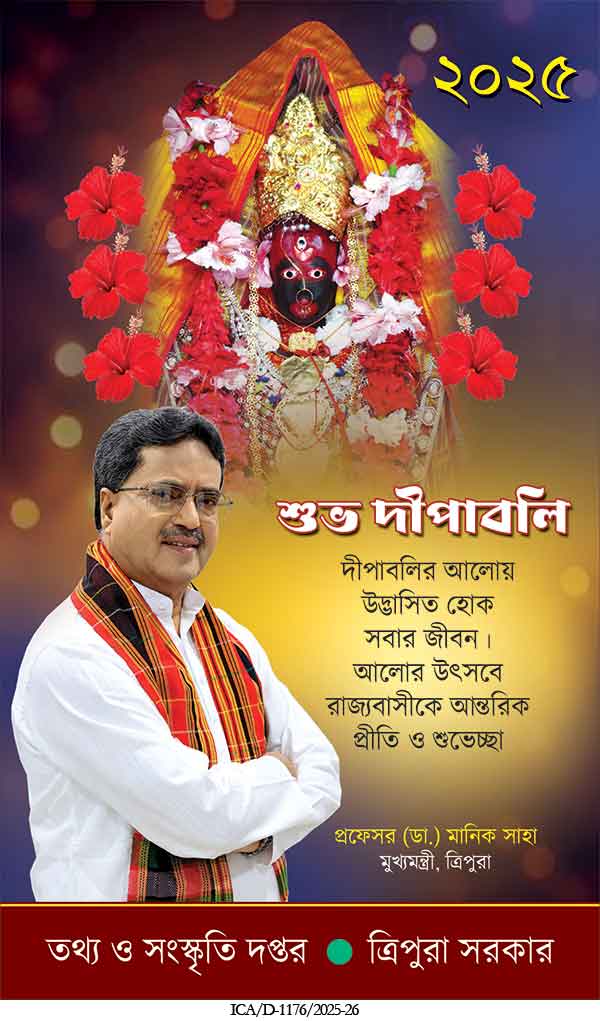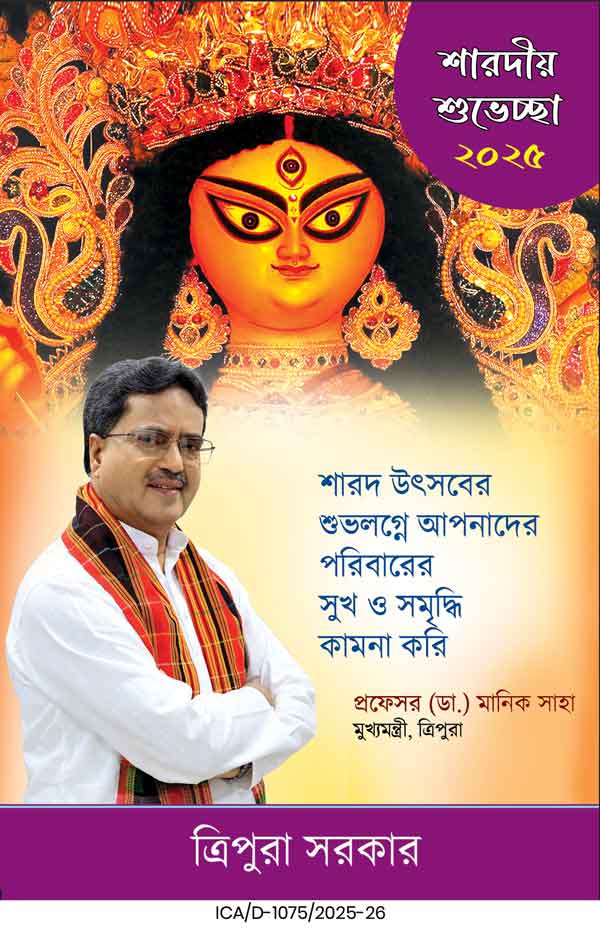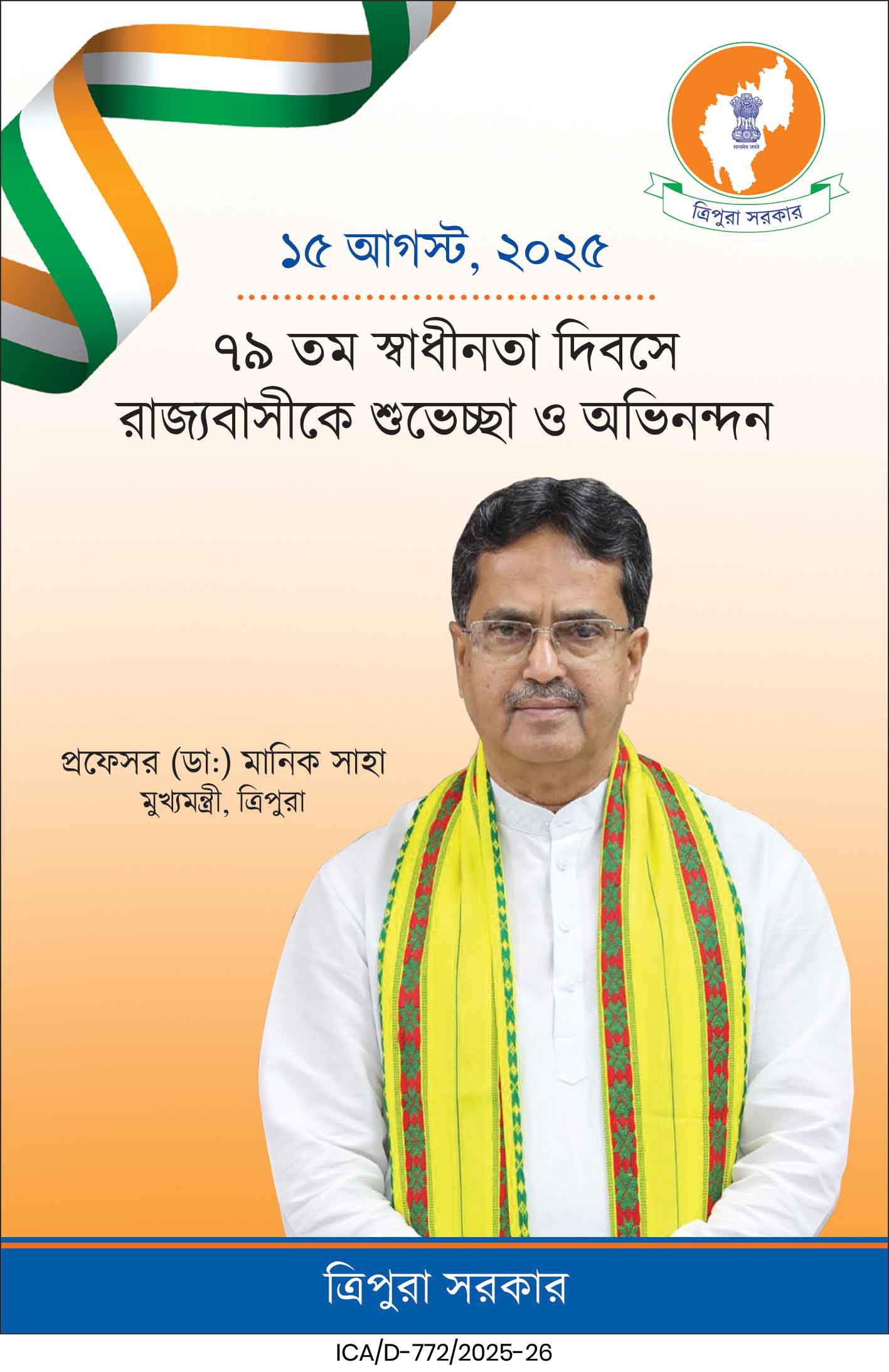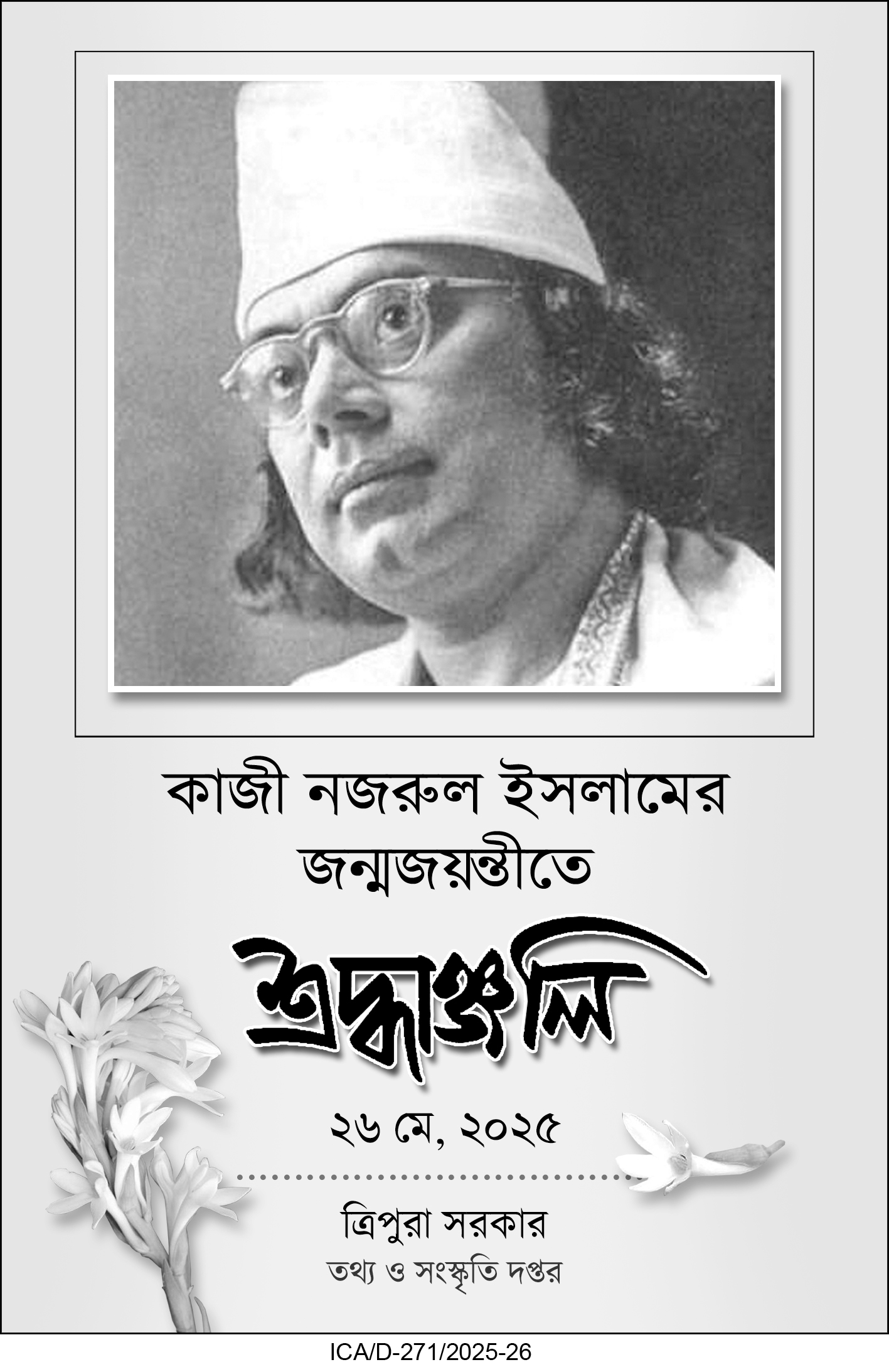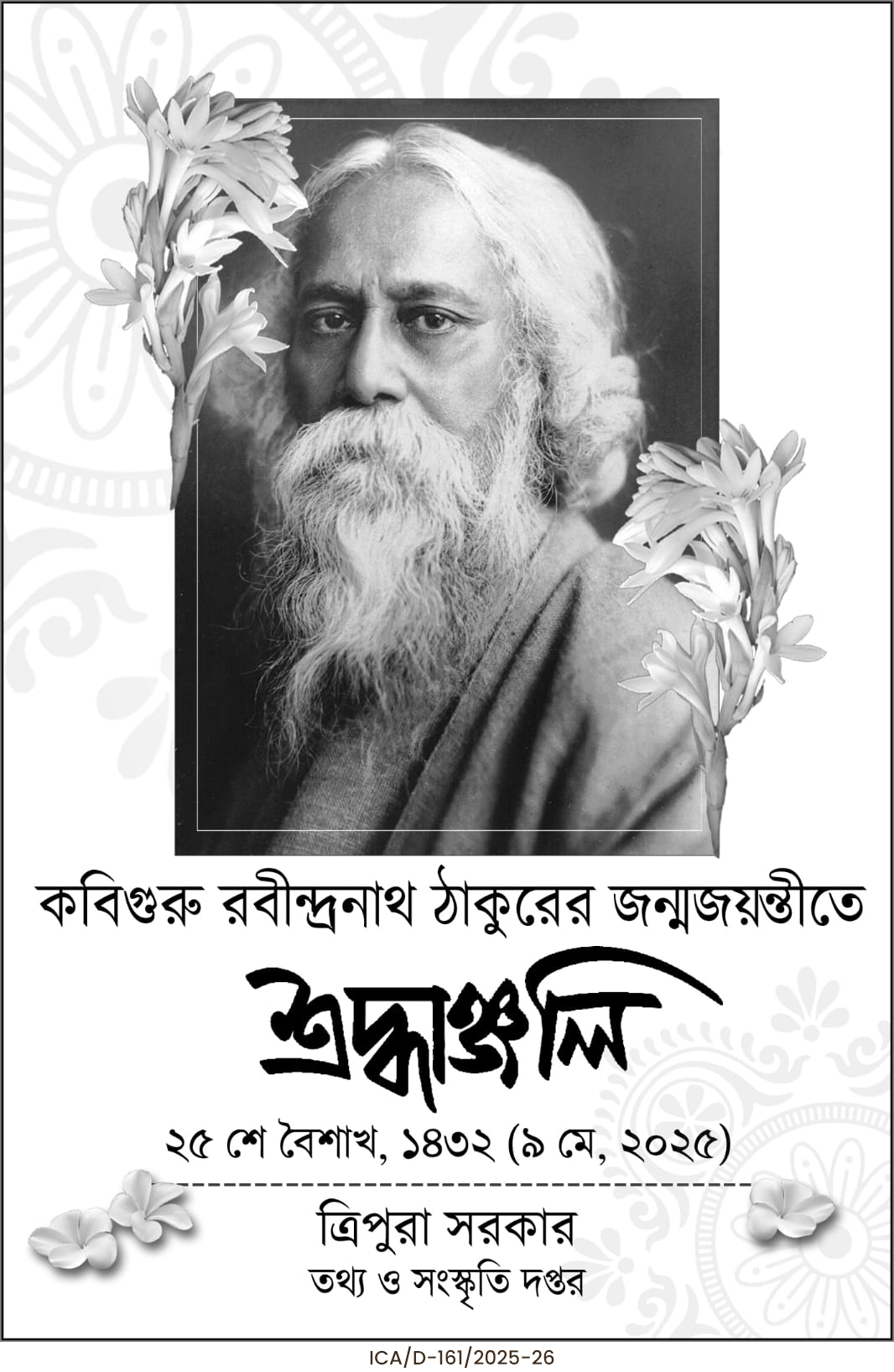Devotion, rituals, and emotions marked Bijoya Dashami in Tripura with idol immersions, Sindoor Khela, Ravan Dahan, and elaborate civic arrangements. Thousands gathered at Dashami Ghat in Agartala as the state bid farewell to Goddess Durga with traditional fervor.
Devotion, emotion, and cultural vibrancy marked Bijoya Dashami, the concluding day of Durga Puja, across Tripura on Thursday. The state bid farewell to Goddess Durga with traditional fervor, elaborate rituals, and an outpouring of devotion.
From the morning hours, local markets in Agartala and other towns witnessed heavy rush as families shopped for special ingredients and delicacies associated with Dashami celebrations. The quintessential Bengali bhoj was an integral part of the day, with people preparing festive dishes to mark the occasion.
As the day progressed, women across the state gathered for the traditional Sindoor Khela—smearing vermillion on each other as a symbolic gesture of strength, prosperity, and the bond of sisterhood. Yatra rituals, symbolizing the journey of the Goddess, added to the spiritual aura of the day.
Immersion with Grandeur and Emotion
The most anticipated part of the celebration unfolded with the immersion (bisarjan) of idols at various ghats across Tripura. The Dashami Ghat in Agartala turned into a central hub for the ritual, drawing thousands of devotees, families, and puja enthusiasts. The atmosphere came alive with the sound of conch shells, rhythmic dhak beats, and chants of “Asche Bochor Abar Hobe”—a promise of the Goddess’s return next year.
One of the highlights was the immersion of idols from the historic Durga Bari temple and Prabhu Bari. Both carry deep cultural and religious significance for the city’s residents. However, during the procession of the Prabhu Bari idol, one side of the idol slipped from the shoulders of the bearers—an incident many interpreted as an ominous sign, adding a layer of emotion to the otherwise celebratory moment.
Adding to the solemnity of the day, the idols from the residence of Chief Minister Dr. Manik Saha were also carried for immersion. The event drew a large number of onlookers, highlighting the blend of tradition, devotion, and community spirit.
Security and Civic Preparations
With thousands of people taking part in immersion ceremonies across the state, the Agartala Municipal Corporation (AMC) made extensive arrangements to ensure a smooth flow of events. Special immersion points were created, and elaborate measures were put in place for waste management and cleanliness.
The state police, Tripura State Rifles (TSR) jawans, and traffic personnel were deployed in significant numbers to manage the crowd, ensure security, and control traffic disruptions. Despite intermittent rainfall in Agartala and surrounding areas, the arrangements ensured that devotees could carry out rituals without major inconvenience.
Ravan Dahan Adds Festive Spark
Even as the immersion rituals continued, Ravan Dahan programmes lit up the Dashami evening at multiple venues across the state. Symbolizing the eternal triumph of righteousness over evil, effigies of Ravana were set ablaze amidst cheers from spectators. The biggest gatherings took place at the ONGC ground and B.T. College ground in Agartala, drawing families and cultural enthusiasts alike.
A Blend of Faith and Cultural Heritage
Bijoya Dashami in Tripura was not merely a ritualistic farewell to Goddess Durga but also an emotional culmination of five days of festivity. From the grandeur of pandals and traditional rituals to the poignant immersion moments and symbolic Ravan Dahan, the day embodied the spirit of devotion, unity, and cultural pride.
| Also Read: Agartala all set for ‘Mayer Gomon 2025’ Durga Puja Carnival on Saturday |
| Also Read: Mayer Gomon 2025: Traffic Unit declares No-Entry Points Across Agartala |
| Also Read: Tripura Police: Only 18% of Idols Immersed on Vijaya Dashami |
For devotees, the immersion may signify separation, but the chants of “Asche Bochor Abar Hobe” echo the eternal cycle of hope and faith, ensuring that Durga Puja continues to remain the heart and soul of Tripura’s cultural calendar.

